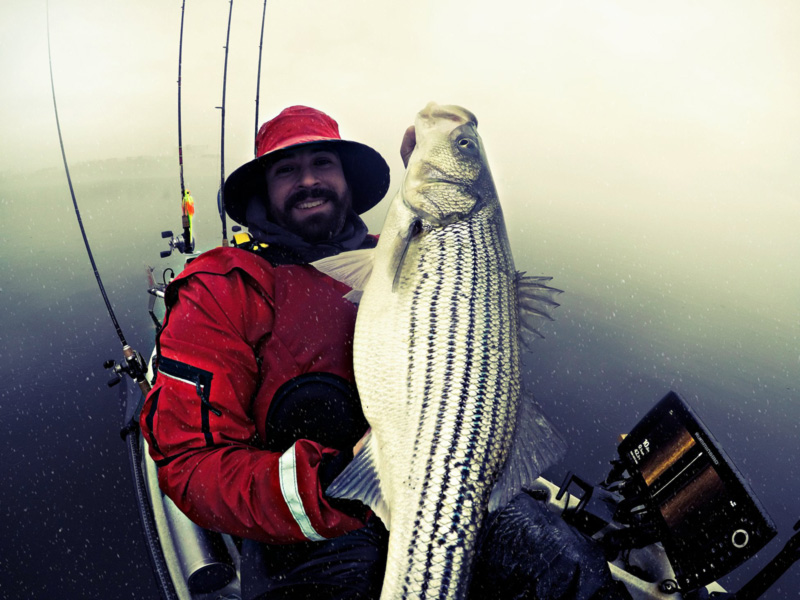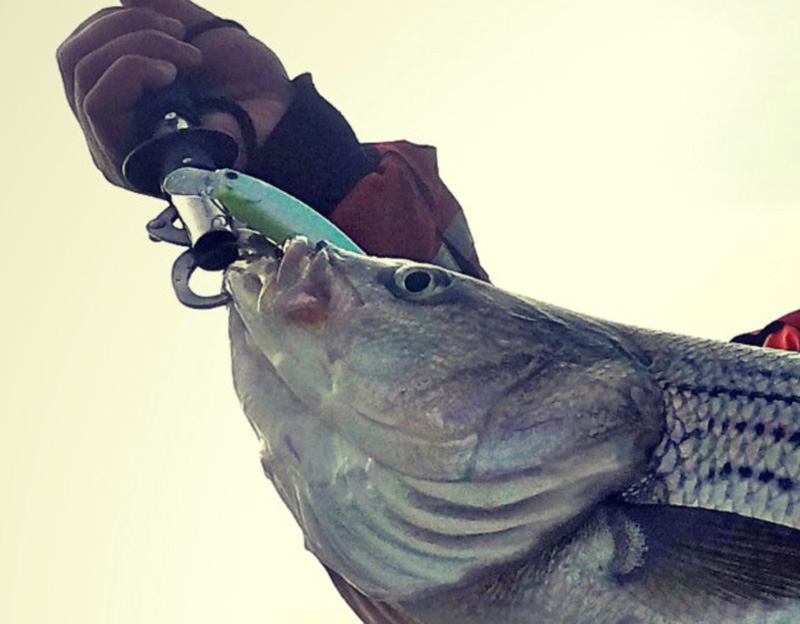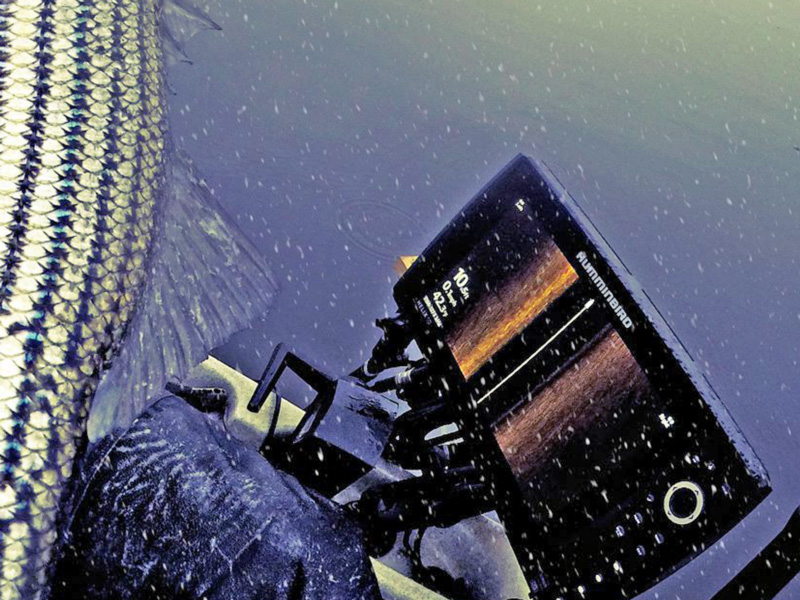We would have preferred to run this article in the April edition of FishTalk when trophy striper fishing is at its peak in the Chesapeake, but due to the trophy season controversy, recent elimination of catch and release striper fishing during that month in Maryland’s portion of the Bay, and the elimination of Virginia's spring Bay trophy season, felt it would be inappropriate. We note that early May still gives you a shot at these fish, but as the waters warm up the big stripers head north — so don’t delay and get out there ASAP!

The angler’s progression begins with catching a fish. Almost any fish will do, but the thirst for catching more fish prevails. The obsession eventually spirals out of control, leading to the desire for the biggest fish possible using the most exciting method — the hunt for a trophy. Specifically in this case, a trophy hunt on a kayak, because I can’t think of a more exciting way to stalk or fight these beautiful stripers than from the lightest of watercraft. Using light tackle on a light vessel the delicate battle between man and beast is a dance, with the pair spinning along the water joined by a fine line. I’ve clocked sleigh rides of two mph and hundreds of yards. After the fish is photographed and quickly released, all I want to do is catch another. Every kayak angler wants to experience this dance, even if just once.
The trophy hunt is so special that very seldom do people share their secrets, but I’m going to take a moment to help you to achieve exactly the same. On the Chesapeake Bay we have the big fish in our waters for just a few short months before they leave for the north. Don’t miss that key motivation; they are here to spawn. Targeting fish always begins with understanding their motivation, which in this case is making their way to the rivers in which they lay their eggs. Well, how do you know what rivers they’re going to? The DNR makes this very easy. They list the spawning rivers as well as provide rolling fishing closures for different weeks throughout the spring. The purpose is to protect the fish while they’re in or around those spawning rivers. And while you can’t target them in spawning rivers, you can intercept them on the way.
The majority of migratory striped bass leave the New England states, make their way down the coast, and enter the mouth of the Bay around December. Over the course of the next several months, they trickle into to the spawning rivers, some sooner and some later, arriving in waves. Common Chesapeake practice for catching these fish is trolling a couple dozen rods or more along the channel edges in the main stem of the Bay, targeting them as the fish swim along the contours. A kayak angler is faced with a couple of problems targeting trophies in this way. First, the main stem of the Bay is a little out of reach. Second, trolling more than two rods for large stripers could be problematic and dangerous if you hook up on a monster and tangle.
When I first began trophy hunting on a kayak, there were no books and hardly any information on how to pull off this feat. Over the years, I’ve documented my experiences and written several books and articles to share the techniques and patterns. However, when I boil it all down, there are just a few key qualities that I look for when selecting my trophy hunting days in the spring. The first is water temperature. While 52 degrees is a magic number when things seem to break loose, early in the season I worry more about the trend in water temperature rather than the absolute number. You want stable or warming temperatures. I’ve found that a cold snap can shut down a bite in an instant.
The second quality that I find important is water clarity, especially since I target these fish exclusively with artificial lures. The clearer, the better. April showers bring flowers, but they also bring a lot of mud and debris. This makes for great spawning conditions but terrible fishing conditions.
A kayak angler cannot fish in the wind effectively. It can be dangerous as well as grueling to battle anything over 10 mph, depending on the wind direction, so I try to fish on the calmest days. While I’ve caught monsters in some sporty conditions, those conditions also tend to stir up the bottom and reduce water clarity.
Another of the important aspects of targeting trophy fish is current. While striped bass always love current, I think there’s something especially important about current this time of year. Not only do the large stripers follow current to their spawning grounds, but also their forage species herring and shad do the same thing. I have done best during the strongest tidal cycles of the month.
Speaking of forage, striped bass eat voraciously leading up to the spawn, so mimicking the bait is paramount to success. Big stripers love gizzard shad as well as anything else they can fit in their mouth, but I believe the herring to be their food of choice. These sleek, shiny morsels don’t have sharp fins as do other fish, and they slip right down the gullet. As a result, I use lures to match the hatch. A few of my favorites are Rapala X-Raps, Shimano Coltsnipers, and Yo-Zuri Crystal minnows.

Now that you know where the fish are going, the conditions that make for the best success, and what lures to use, the next step is finding an area to successfully intercept them. I intentionally use the word “intercept” because these fish do not stick around long. They are moving from one place to another, which means you’ll often need to cover some ground in order to be successful. While I’ve caught trophy stripers using many methods, by a significant margin, I’ve caught the most trolling lures similar to the ones I’ve mentioned above in water under 10 feet deep. Because a kayak angler cannot effectively troll a spread of a few dozen rods in the middle of the Bay, I look for high probability areas around points, funnels, and shallow flats near deeper water that are on the path to their spawning grounds. These areas have greater current and also provide locations to ambush herring that can be found following shorelines, weed lines, and other natural contours. On a nautical chart, draw the shortest path from the entrance of the Bay to a region you wish to fish that is on the way to a spawning area, and circle some of the topographic features that your line intersects. These features are prime kayak territory where stealth is required. Troll these areas thoroughly at 2.5 to 3.5 mph, and if you have a Torqeedo, all the better because the swift current and distance required will wear you out.

I also use Humminbird’s incredible side imaging, which has been a big game-changer. I can see crystal clear images 125-plus feet to each side of the kayak, or a 250-foot swath of Bay bottom. Without this tool, you can only see a small diameter circle directly below the kayak, about 2.5 feet when in seven feet of water using standard down-looking sonar. Years ago, I vividly remember many examples of anglers not wanting to fish because they weren’t marking anything…then I’d pull up another large fish in front of them. My advice then was, “trust that the fish will be here” because you won’t typically mark them in very shallow water. With quality side imaging, however, you can see everything around the kayak, and no longer need to blindly search with a lure. The imaging immediately tells me if fish are in the area and if they aren’t, I move onto the next hot spot. You have just a few short hours to catch them in the shallows, so don’t waste a moment in non-productive water. Efficiency leads to more and bigger fish, and trust me, you don’t want to miss a single exhilarating second of fighting a big fish on a kayak. Now go get ‘em — but remember to please practice safe catch and release. Facing a severe population decline, we need these breeders more than ever.
-By Alan Battista